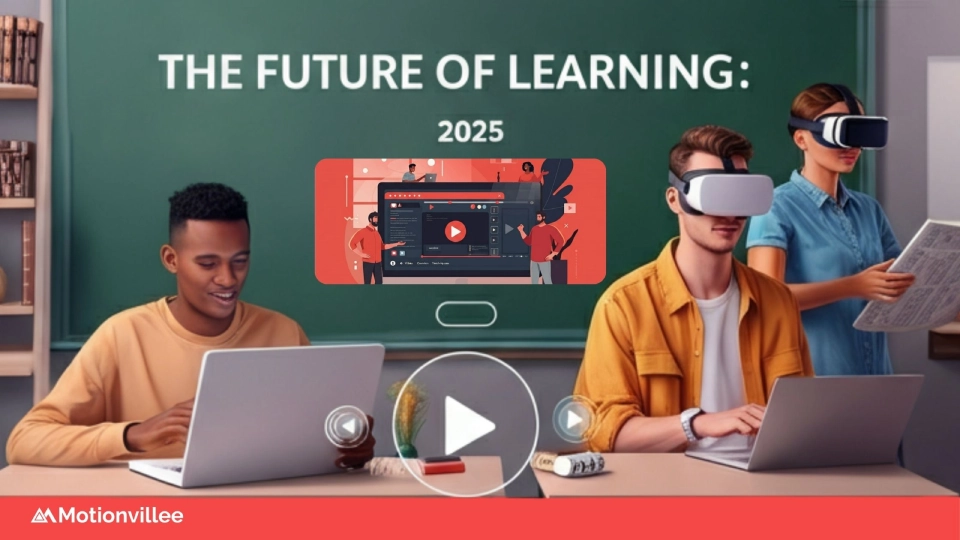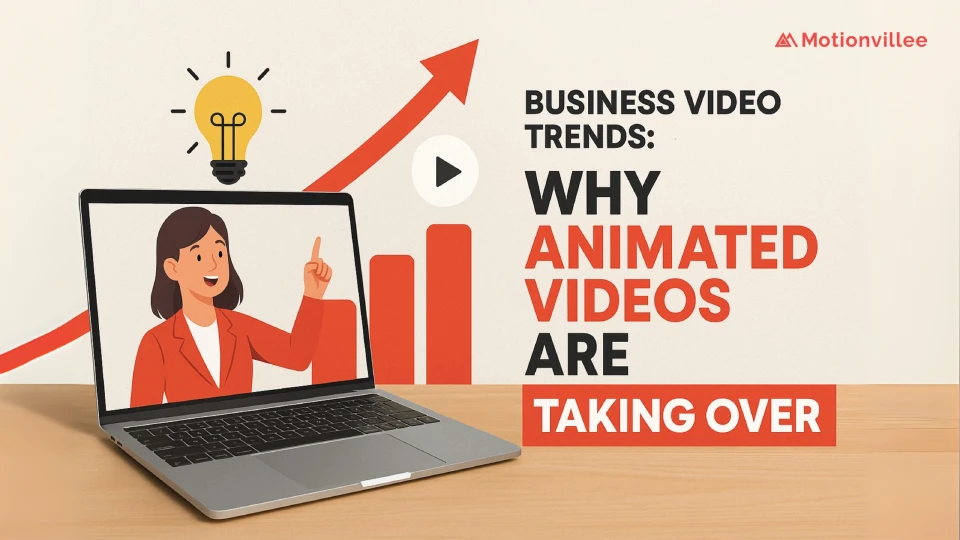As the education sector continues to adapt to new technologies and learning styles, video marketing has emerged as a game-changer. Video content is no longer just for entertainment or social media; it is transforming how educational institutions and companies deliver knowledge.
In 2025, video marketing in education is set to become even more powerful, creating new ways to engage learners, boost retention, and enhance accessibility.
Here are the key trends in video marketing that are reshaping the future of education:
1. Interactive and Personalized Learning Experiences
Video in education isn’t just about watching anymore; it’s about doing.
- In 2025, learners will engage directly with content through quizzes, clickable options, and scenario-based decisions built into the video itself.
- This turns passive viewers into active participants, which boosts attention and retention.
- Interactive paths allow people to choose what they want to explore next, personalizing the journey.
Instead of one-size-fits-all training, you can deliver experiences that adjust to each learner’s pace, role, and preferences. That makes learning more relevant and more effective.
2. Short-Form Educational Videos for Microlearning
Attention spans are getting shorter, and educators are responding with bite-sized, on-demand content that allows students to learn in quick, manageable sessions.
- Short-form videos, typically under 5 minutes, are becoming a popular way to explain concepts clearly and concisely.
- Microlearning enables students to grasp important information quickly, which can be especially beneficial in corporate training or skills development.
- Video platforms like YouTube Shorts or Instagram Reels are already optimizing this format for educational purposes.
3. AI-Powered Video Content Creation
Artificial intelligence is playing an increasingly important role in b2b video production and customization. By 2025, AI will significantly enhance how educational videos are created and consumed.
- AI tools will automate video creation, from scriptwriting to editing, enabling educators to produce high-quality content at scale.
- AI can also tailor content to individual learners’ preferences, providing a more dynamic and engaging experience.
- These advancements reduce production time and costs while ensuring videos remain relevant and up-to-date.
4. Live Streaming and Real-Time Engagement
Live streaming will continue to thrive as a powerful tool for real-time learning, especially in a world where remote learning is becoming the norm.
- Webinars, live lectures, and real-time Q&A sessions allow for immediate interaction and feedback, improving engagement.
- Live streaming also fosters a sense of community and connection among students, even in virtual classrooms.
- This trend is particularly valuable for institutions or businesses offering online certifications or professional development programs.
5. Virtual Reality (VR) and Augmented Reality (AR) Integration
In 2025, the integration of VR and AR with video content will revolutionize how education is delivered.
- VR and AR technologies allow students to experience lessons in immersive environments, such as virtual field trips or simulated experiments.
- By integrating these technologies into educational videos, learners can engage in more practical, hands-on experiences, enhancing understanding and retention.
- The potential applications for fields like medicine, engineering, and history are endless, offering unprecedented opportunities for experiential learning.
6. User-Generated Content and Peer-to-Peer Learning
User-generated content (UGC) is increasingly becoming a vital aspect of video marketing in education. Peer-to-peer learning allows students to share their experiences and insights in a more authentic, relatable way.
- Educational platforms will leverage UGC to allow students to contribute to video libraries, creating a more diverse range of perspectives.
- These videos can also serve as collaborative learning tools, where students help each other solve problems or explain concepts in their own words.
- UGC not only increases engagement but also fosters a sense of community and inclusivity within the learning environment.
7. Enhanced Accessibility Features in Videos
Accessibility will be a top priority for educational video companies in 2025. More focus will be placed on ensuring that video content is accessible to all learners, regardless of their abilities or background.
- Closed captions, translations, and sign language interpretation will become standard features for educational videos.
- Enhanced video navigation tools will allow students with disabilities to engage with content more effectively.
- This trend ensures that education remains inclusive and available to a wider range of learners, meeting global accessibility standards.
8. Data-Driven Video Optimization
Data analytics will become an essential tool for optimizing educational video companies’ content. By 2025, institutions and businesses will rely on data to measure engagement, retention, and the overall effectiveness of their videos.
- Data can help identify which video topics generate the most interest and where viewers tend to drop off, allowing creators to adjust content accordingly.
- Performance metrics will help educators refine their teaching methods, ensuring that video content resonates with students and improves learning outcomes.
- This trend enables continuous improvement of educational materials and ensures they align with the evolving needs of learners.
The Future of Education Through Video
Video isn’t just enhancing education; it’s completely transforming how knowledge is shared, absorbed, and retained.
As we move deeper into 2025, we’re seeing a shift from traditional lectures and static materials to dynamic, learner-driven experiences.
- Video now supports everything from microlearning and interactive quizzes to virtual reality walkthroughs and AI-powered personalization.
- This evolution makes learning more accessible, engaging, and adaptable to individual needs, whether you’re training employees, onboarding clients, or scaling educational programs.
- The real advantage lies in how these trends boost retention, deepen understanding, and make learning more meaningful.
Educational institutions and organizations that embrace video aren’t just staying relevant; they’re creating more impact, building stronger engagement, and shaping a smarter way forward.
Motionvillee is here to help you do exactly that, strategically and with clarity.
How Motionvillee Can Help
Motionvillee partners with educational video companies to create animated and explainer videos that simplify learning and elevate the educational experience.
Whether introducing a new training program, explaining a complex process, or delivering short-form microlearning content, we help you do it with clarity and style.
From explainer animations to story-driven visuals, our team clarifies complex ideas, making them accessible, engaging, and easy to grasp.
We focus on strategy, storytelling, and quality, so your content doesn’t just inform, it resonates.
Let Motionvillee help you transform your educational communication into something your audience wants to watch and remember.











